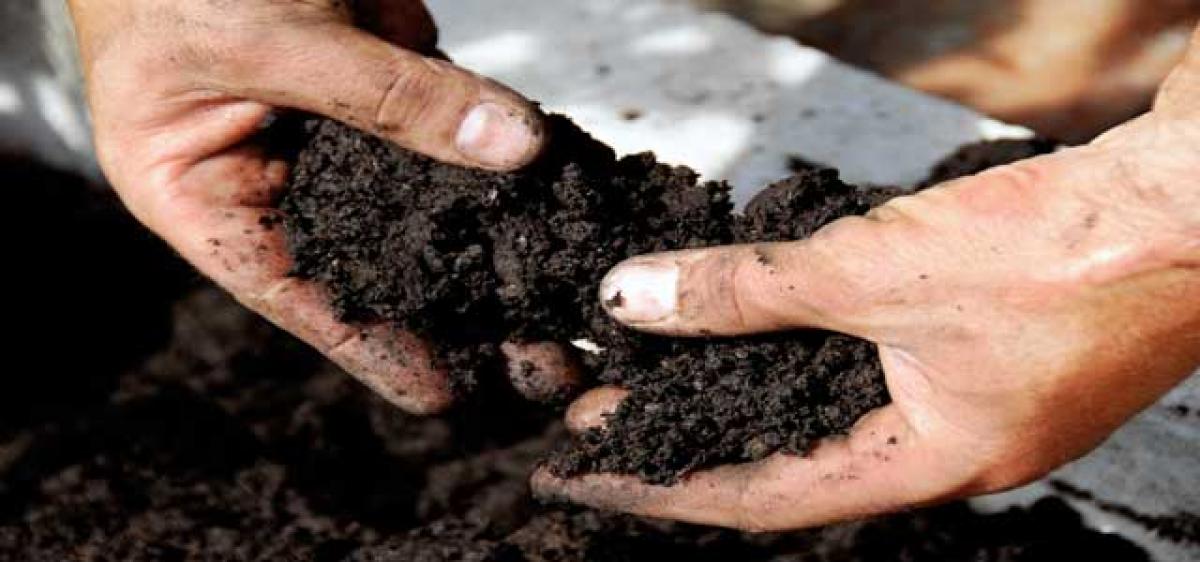Live
- Odisha BJP chief to be elected in January
- AP Home Minister Anitha alerts officials amid rains in heavy Rains in Tirupati
- Taluk Guarantee panel
- Uber Launches Uber Moto Women for Safer and Flexible Rides in Bengaluru
- ‘Fear’ pre-release event creates waves
- Champions Trophy 2025 Host Change? Indian Broadcaster's Promo Sparks Controversy
- Nabha Natesh introduced as Sundara Valli from ‘Swayambhu’
- Aamir Khan praises Upendra's ‘UI: The Movie’ ahead of its release
- Celebrations: Keerthy Suresh ties the knot with Antony Thattil
- Indian scientists develop flexible near-infrared devices for wearable sensors
Just In

Organic matter is important for soil health and crop productivity. While an indicator of soil quality, a lot of organic matter is in extremely stable forms, and the nutrients in such forms are difficult for plants to use.
Organic matter is important for soil health and crop productivity. While an indicator of soil quality, a lot of organic matter is in extremely stable forms, and the nutrients in such forms are difficult for plants to use.
The active, labile (transformable) fraction, however, is a modest but important part of the organic matter. “The labile fraction is small – usually less than 20 or even 10 percent, depending on how you define it,” explains Steve Culman, lead author of a study published online in Agronomy Journal.
“But it is where a lot of the action happens. It’s where soil nutrients are rapidly cycled and are interacting with microbial communities.”
The size of the labile pool, then, can be an important predictor of corn agronomic performance. But the tests used up to this point to measure those pools, such as microbial biomass and particulate organic matter, were labor intensive and expensive.
Culman, in Sieg Snapp’s lab at the W.K. Kellogg Biological Station, decided to use other measurements of the labile fractions – including nitrogen mineralization and carbon mineralization – to see what information these inexpensive tests might give them.
Their results suggest that simple measures of labile organic matter can reflect long-term management and short-term seasonal changes as well as predict corn performance.
To better understand labile soil organic measurements and what they could tell farmers, the researchers measured soils managed in a variety of conditions. Fields were maintained with three different management practices (conventional, integrated, and compost) and two different crop rotations (continuous corn with no cover crops and corn-soybean-wheat with cover crops).
After collecting soil from the different fields, the scientists then measured carbon and nitrogen mineralization. “What’s nice about carbon and nitrogen mineralization is they’re based on actual biological activity,” says Culman.
“You take into account the soil microbes and environment for these tests.” A long-term cropping system trial provided the perfect opportunity to test the extent to which carbon and nitrogen mineralization measurements were affected by both management practice and crop rotation.
These tests, then, could be used to identify the best practices, such as fertilizer application, for a given field. This would be especially useful for nitrogen – a nutrient that is incredibly important for crop growth but is rarely measured by farmers.
“Most farmers don’t test their soils for nitrogen,” explains Culman. “They just basically apply a rate based on their yield goals, and excess nitrogen may be applied. The long-term goal would be to offer these as predictive tests for farmers so they can say, ‘Given my soil type, management, and these measures, I should apply this amount of nitrogen.’ That’s the ultimate goal.”

© 2024 Hyderabad Media House Limited/The Hans India. All rights reserved. Powered by hocalwire.com







